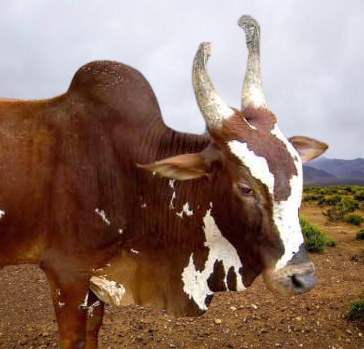Bargur cattle are a mountainous breed that originates from the Bargur hills in the Erode District taluk of Anthiyur. They are frequently employed in their native regions for draught purposes. They have traditionally been reared in herds by the Lingayat people who speak Kannada and live in the Bargur region exclusively. They are raised largely to carry out agricultural tasks in the hilly region.
Bargur cattle are also famous for their trotting skills. Cattle-raising and the celebration of cattle through events such as Jallikattu give Tamil Nadu its own unique identity. Similarly, the Bargur cow breed is an indigenous Draught breed of Tamil Nadu. It is an old hill breed of cattle that is raised by an ancient tribal community in Bargur. Most of the time, Bargur cattle are kept in a system called "extensive management." This means that they are raised in semi-wild forest areas in groups of 50 to 200 animals in areas called "Pattys."
Bargur Cattle Characteristics
This breed is designed for hilly terrain and features a body that is short and compact. The average weight of an adult male is 300 kilograms while that of an adult female is 250 kg. These cattle exhibit white spots all over their bodies and are typically red or black in appearance. It features a compact body that facilitates walking long distances.

This breed is distinguished by the following characteristics:
- The Bargur is a medium-sized breed of cattle with a compact body and tight skin.
- The skin is red, and the coat can range in color from cherry-red to mild red.
- The length of the hair is quite short, it is straight and fine, and the color of the hair is a mixture of brown and white. Both the muzzle and the eyelashes are predominantly brown. The head is well-formed, long, and gradually tapers towards the muzzle.
- The forehead is relatively wide and moderately prominent.
- The ears are horizontal and small, and the horns are slender. The ribs are well-arched and the hump is of average size.
- The dewlap is well-defined, short, and extends up to the sternum.
- The udder is tiny and closely joined to the teat.
- The teats are somewhat little, cylindrical in form, and widely spaced apart, and their tips are pointed.
Bargur Cattle Milk per day
Bargur is a breed of dual-purpose cow. Bargur cattle are bred specifically for agricultural work in mountainous terrain and are renowned for their speed, stamina, and ability to trot. These animals are renowned for being fiercely aggressive and hardy. They avoid new people and exercise extreme caution in all situations.
It produces the same 700-800 kilograms of milk as other native breeds after each calving. Its normal gestation duration is 9 months and its calving interval is 1–2 years. It produces 1.5 to 3 liters of milk each day. Cattle are allowed to graze freely in deep forests from dawn to dusk. These cows are not particularly good milkers, yet their milk is recognized to have significant nutritional and therapeutic value. Scientists are planning intensive selective breeding programs for the cows to increase milk production by 50 percent, from 2 to 3 liters per day.
Bargur Cattle Price
The Bargur cattle are brown overall with white patches on the upper parts of their bodies. However, in many instances, they are primarily white with brown spots. The average price for a Bargur cow can range from Rs. 30,000 to Rs. 2,00,000 depending on its breed, age and milking capacity. The price of a Bargur cow in India can rise or fall depending on the current market demand, but this breed is in high demand due to its ability to withstand drought conditions while still trotting at a good pace. They have a great level of endurance, and their milk possesses medicinal properties.









0 Comments